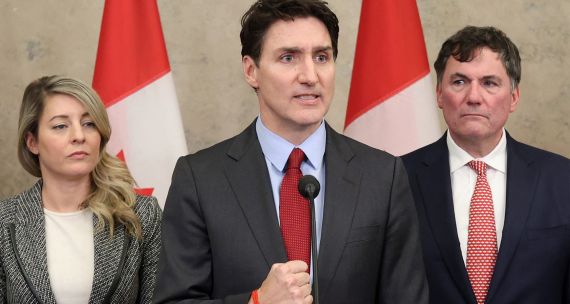The looming trade war between the United States and China – potential tariffs have so far only been announced – may never happen, but it is the type of brinkmanship that neither country needs, nor does the rest of the world, for that matter. The world trading system may be caught in the crossfire. And sadly, it won't really help those who may blame China for all their economic woes.
There is no doubt that the terms of trade have changed – the United States does have a US$347-billion deficit with China, but a look at how that trade is structured demonstrates that bilateral trade is a poor measure. For example, China exports Apple phones to the United States and these are counted as Chinese exports. But the Chinese value-added is minimal – the design, development and intellectual property are all created in the United States (and tellingly, smartphones were not on the U.S. list of tariffs). According to a Brookings Institution report, 37 per cent of U.S. imports from China are intermediate products used by U.S. firms to make themselves more competitive.
And as is often the case, services trade tells a much different story – the U.S. is a services-trade powerhouse and its relationship with China is no exception where it is in surplus (US$38-billion).
The retaliatory tariff lists by each country resemble a gerrymandered Congressional district, carefully sculpted to inflict pain in certain sectors, but not in others. Looking at an analysis by the Peterson Institute of International Economics in Washington, "the top sector that Trump's tariffs would hit are imports of machinery, mechanical appliances and electrical equipment, worth $34.2-billion." China's list hits at the heartland of U.S. agriculture by focusing on soybeans and then transportation equipment to ensure that Boeing gets involved. But for the moment, Boeing's newer aircraft appear to have escaped. The tariff on auto parts will not have much impact since most of the major manufacturers have joint ventures in China. The exception, as noted by The New York Times, is Tesla, and Elon Musk was quick to voice his complaints on Twitter.
The U.S. list conscientiously avoids consumer products and is designed to encourage more elements of the manufacturing supply chain to be sourced in the United States. The Chinese list seems to hint that the worst is yet to come. And the tariffs on steel and aluminium that went into effect last month do not affect China potentially as much as major suppliers such as Canada and Mexico. But even if the tariffs are never implemented, the uncertainty is bound to affect investment decisions.
And is trade the real issue? I would argue that investment is the bigger challenge. Investment in China is restricted: Why not focus on the restrictions on U.S. investment in China, since this is where the United States, if it is looking for reciprocity, should be demanding fair treatment? But perhaps this approach does not garner votes.
The other issue is intellectual property, but here it is questionable whether tariffs are the right tool to address it. Over time, China is playing an increasingly important role in intellectual-property creation. It may eventually be an ardent supporter of IP protection. In the meantime, foreign investors need to be vigilant and governments need to put pressure on the investment rules and treatment of foreign companies in China, in particular, forced technology transfers.
China is showing its strength, focusing on building an innovative economy, in clean-tech and artificial intelligence, for example. China's trading partners are concerned about China reverting to "Made in China" mercantilism, and a hardline stance on things like virtual private networks (VPNs), Communist Party committees in corporations and protectionist policies. So why is the United States relying on unilateral action?
The U.S. strategy seems to be to use threats and linkages – sending the stock markets into a downward spiral, then up again when reminded that this is just a bargaining chip. Maybe the White House is pleased by its success with amending the USA-ROK trade agreement, where this approach may have worked. However, it was the overriding security imperative that induced the Koreans to settle, and China is a much better-equipped opponent.
Trade policy watchers in Washington are hoping that the Chinese delegation will use the coming World Bank/IMF spring meetings to meet with their U.S. counterparts on the sidelines. And through USTR's Section 301 public consultations and in the media, groups that will be affected by tariff actions will be speaking up.
In the end, however, it may all boil down to ensuring that Trump voters believe that the President has their back. Talking tough on trade engages that audience in the lead-up to the midterm elections. Actually implementing the tariffs and launching a trade war might spoil that.
This piece first appeared in the Globe and Mail on April 9, 2018.



